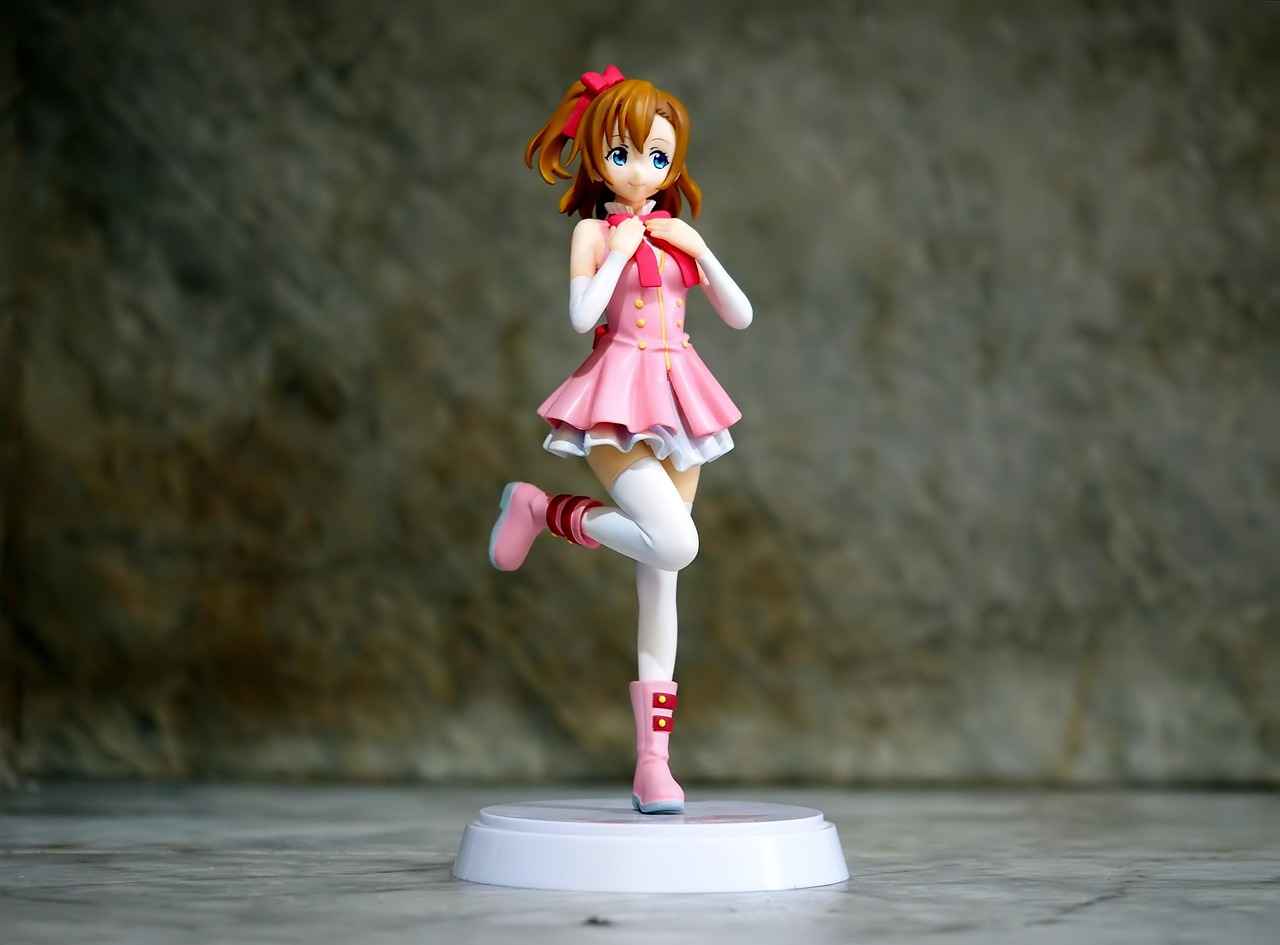This article delves into the essential elements that make an anime storyline compelling, providing insights into character development, plot structure, themes, and viewer engagement. Understanding these components can significantly enhance your ability to identify high-quality anime shows.
Understanding Storytelling in Anime
A captivating anime storyline relies on effective storytelling techniques that engage audiences and maintain their interest in both the characters and the plot. A well-crafted narrative can transform a simple premise into a memorable experience.
Character Development: The Heart of the Story
Strong character development is a cornerstone of any great anime. Characters that are well-rounded and undergo significant growth create emotional connections with viewers, making the storyline more relatable.
- Protagonists and Antagonists: The dynamic between protagonists and antagonists is crucial. A well-defined conflict between these characters not only drives the narrative but also adds layers of tension and intrigue.
- Character Arcs: Following character arcs allows viewers to witness growth over time, fostering a sense of progression and investment in their journeys.
- Supporting Characters: These characters add depth to the storyline, often revealing key themes and enhancing the main characters’ development through their interactions.
Plot Structure: Building a Compelling Narrative
A well-structured plot is vital for an engaging anime. It should feature a clear beginning, middle, and end, with pacing that keeps viewers invested in the unfolding drama.
Thematic Depth: What Lies Beneath
Exploring profound themes can elevate an anime from the ordinary to the extraordinary. Themes such as friendship, sacrifice, and the struggle between good and evil resonate deeply, prompting viewers to reflect on real-world issues.
- Symbolism and Metaphors: The effective use of symbolism can enrich the storyline, providing viewers with multiple layers of interpretation.
Viewer Engagement: The Emotional Connection
An anime’s ability to emotionally engage its viewers is a significant indicator of a strong storyline. Engaging narratives evoke feelings, making audiences care about the characters and their journeys.
- Emotional Resonance: An anime that successfully evokes emotions—whether joy, sadness, or nostalgia—can leave a lasting impact, making it memorable.
- Community and Cultural Impact: The way an anime resonates with its audience and sparks discussions can highlight its storytelling quality and relevance across cultures.
Conclusion
In conclusion, recognizing the key elements of a great anime storyline—character development, plot structure, thematic depth, and viewer engagement—can enhance your viewing experience. By understanding these components, you can make informed decisions and discover anime that truly resonates with you.

Understanding Storytelling in Anime
A captivating anime storyline is built on the foundation of effective storytelling. This involves the use of various narrative techniques that not only engage viewers but also ensure they remain invested in the characters and plot. The essence of storytelling in anime lies in its ability to weave intricate tales that resonate with audiences on multiple levels.
One of the primary components of storytelling is narrative structure. A well-crafted narrative typically includes a clear beginning, middle, and end, providing a solid framework for character development and plot progression. This structure allows the audience to follow the journey of the characters while anticipating twists and turns that enrich the viewing experience.
Moreover, the characters themselves are the lifeblood of any anime. Strong character development is crucial; characters must be multi-dimensional, with their own motivations, flaws, and growth arcs. Viewers often connect more deeply with characters who undergo significant changes throughout the series, making their experiences relatable and impactful.
Additionally, the themes explored within an anime contribute significantly to its storytelling prowess. Themes such as friendship, sacrifice, and the battle between good and evil not only enhance the narrative but also prompt viewers to reflect on their own lives. This thematic depth invites audiences to engage with the material on a personal level, making the story more memorable.
Finally, viewer engagement is a vital aspect of storytelling. An anime that successfully evokes a range of emotions—be it joy, sadness, or nostalgia—creates a lasting impression. The emotional resonance of a story can foster a sense of community among fans, leading to discussions and connections that extend beyond the screen.
In summary, understanding the intricacies of storytelling in anime is essential for identifying shows with great narratives. By focusing on narrative structure, character development, thematic depth, and emotional engagement, viewers can better appreciate the artistry involved in crafting compelling anime storylines.

Character Development: The Heart of the Story
In the realm of anime, character development serves as the cornerstone of an engaging narrative. When characters are crafted with depth and nuance, they transform into relatable figures that resonate with viewers. This emotional connection is vital, as it allows audiences to invest in the characters’ journeys, making the storyline not only more captivating but also profoundly impactful.
At the core of any compelling anime are its protagonists and antagonists. These characters often embody contrasting ideals, and their interactions propel the story forward. A well-defined conflict between these figures introduces tension and intrigue, which are essential for maintaining viewer interest. As the plot unfolds, the character arcs of both protagonists and antagonists reveal their growth, providing a satisfying sense of progression.
Supporting characters also play a crucial role in enriching the narrative. They add layers of complexity and often serve as mirrors to the main characters, highlighting their strengths and weaknesses. Through their interactions, themes emerge that deepen the storyline and enhance character development, making the overall experience more rewarding for viewers.
Furthermore, the evolution of characters throughout the series fosters a sense of investment among viewers. When audiences witness characters facing challenges, overcoming obstacles, and evolving in response to their experiences, it creates a powerful emotional resonance. This connection not only keeps viewers engaged but also encourages them to reflect on their own lives and struggles.
In conclusion, strong character development is integral to a successful anime. It transforms a simple story into a profound exploration of the human experience, allowing viewers to connect with the characters on a deeper level. By creating well-rounded characters with significant growth, anime can leave a lasting impact and foster a loyal fanbase.
Protagonists and Antagonists
The dynamic relationship between protagonists and antagonists is a vital force that propels the narrative of any anime. This intricate interplay creates a compelling conflict that not only drives the plot forward but also enriches the viewer’s experience. When crafted effectively, the tension between these two character types adds layers of complexity and intrigue, making the story more engaging.
At the heart of this relationship lies the conflict. A well-defined antagonist challenges the protagonist’s goals, leading to a series of confrontations that test the protagonist’s resolve, skills, and moral compass. This conflict is not merely physical; it often involves ideological differences, emotional struggles, and personal stakes that resonate with the audience. For instance, in many beloved anime, the antagonist may embody the darker aspects of the protagonist’s personality, creating a reflection that prompts viewers to reflect on their own values and choices.
The development of these characters is crucial. As the story unfolds, both protagonists and antagonists should experience growth or change. This evolution can manifest in various ways, such as the protagonist overcoming personal fears or the antagonist revealing a tragic backstory that elicits empathy. Such character arcs not only enhance the storyline but also foster a deeper emotional connection with the audience.
Moreover, the relationship between these characters often serves as a vehicle for exploring broader themes. Issues such as redemption, betrayal, and the nature of good and evil are often examined through their interactions. This thematic depth adds richness to the narrative, encouraging viewers to engage with the material on a more profound level.
In conclusion, the relationship between protagonists and antagonists is essential for driving the story forward in anime. By crafting a well-defined conflict and allowing for character development, creators can enhance the overall narrative, making it more compelling and memorable for audiences.
Character Arcs
play a pivotal role in storytelling, especially in anime. They represent the journey of characters as they evolve, face challenges, and ultimately transform in response to their experiences. This growth is not just a backdrop; it is the driving force that engages viewers and fosters a deep emotional connection with the characters.
At the heart of a compelling anime, character arcs provide a framework for understanding the motivations and struggles of characters. As viewers witness their favorite characters navigate through trials—be it personal loss, moral dilemmas, or external conflicts—they become invested in their journeys. This investment is crucial; it transforms passive viewers into active participants, rooting for characters to succeed or change for the better.
Moreover, well-developed character arcs often highlight the themes of the story. For example, a character’s journey from selfishness to selflessness can resonate with themes of friendship and sacrifice. This not only enriches the narrative but also allows viewers to reflect on their own lives and challenges.
Additionally, character arcs can serve as a mirror to the audience, showcasing relatable struggles and triumphs. When a character overcomes adversity, it can inspire viewers, making the anime not just a source of entertainment, but also a source of motivation and hope.
In conclusion, character arcs are essential for creating a memorable anime experience. They provide depth and resonance, allowing viewers to engage with the storyline on a personal level. By focusing on the growth and transformation of characters, anime can create lasting impressions that stay with audiences long after the credits roll.
Supporting Characters
play a crucial role in enriching the storyline of any anime. These characters, often overlooked, serve as the backbone that adds depth and complexity to the narrative. Their interactions with the main characters not only reveal important themes but also significantly contribute to character development.
One of the key functions of supporting characters is to provide a contrast to the protagonists. This contrast can highlight the strengths and weaknesses of the main characters, making their journeys more relatable and engaging. For example, a wise mentor figure can guide the protagonist, while a rival can challenge them, pushing them to grow and evolve.
Moreover, supporting characters often embody various themes that resonate throughout the storyline. They can represent ideals such as friendship, loyalty, or even betrayal, which enriches the overall message of the anime. Their unique backgrounds and motivations can also introduce subplots that complement the main narrative, providing viewers with a well-rounded story.
Character development is further enhanced by the dynamics between supporting characters and the protagonists. For instance, a character who initially appears as a sidekick may undergo significant growth, ultimately becoming a pivotal part of the storyline. This evolution not only captivates the audience but also reinforces the theme of personal growth and redemption.
In conclusion, supporting characters are indispensable to a compelling anime storyline. Their ability to add layers of meaning and foster character development makes them essential for creating an engaging narrative. By understanding their role, viewers can appreciate the intricacies of storytelling in anime, leading to a deeper connection with the series.
Plot Structure: Building a Compelling Narrative
A well-structured plot is the backbone of any engaging anime. It serves as a roadmap, guiding both the creators and the audience through the story’s twists and turns. A compelling narrative typically consists of three primary components: a clear beginning, a well-developed middle, and a satisfying end.
- Beginning: This is where the groundwork is laid. The audience is introduced to the main characters, the setting, and the initial conflict. A strong opening captivates viewers, enticing them to invest their time in the unfolding story.
- Middle: The heart of the plot, where the conflict escalates and character development occurs. This section should include various plot twists and turns that maintain suspense and excitement. Well-paced developments keep viewers engaged, ensuring they remain emotionally connected to the characters and their journeys.
- End: A satisfying conclusion ties up loose ends and resolves the central conflict. It’s crucial that the ending resonates with the audience, providing closure while leaving them with something to ponder long after the credits roll.
Moreover, the pacing of these sections is vital. Too fast, and the audience may feel overwhelmed; too slow, and they might lose interest. A balance must be struck to maintain engagement throughout the series.
In summary, a well-structured plot is essential for any anime that aims to capture the audience’s attention. By ensuring a clear beginning, middle, and end, along with well-paced developments, creators can craft narratives that are not only engaging but also memorable.

Thematic Depth: What Lies Beneath
In the realm of anime, themes serve as the backbone of storytelling, transforming simple narratives into profound explorations of human experience. A well-crafted theme can resonate deeply, prompting viewers to engage not only with the story but also with their own lives. This article delves into the significance of thematic depth in anime, highlighting how it enhances the viewer’s experience.
At its core, a strong theme can elevate a story from the mundane to the remarkable. For instance, themes of friendship, loss, and identity often permeate various series, allowing audiences to connect on an emotional level. These themes encourage viewers to reflect on their own relationships and struggles, fostering a sense of empathy and understanding.
Additionally, anime often tackles real-world issues, such as mental health, societal pressures, and moral dilemmas. By addressing these topics, anime creators invite audiences to consider complex questions about life and existence. This not only enriches the narrative but also sparks meaningful conversations among fans.
Moreover, the use of symbolism and metaphors can add layers of meaning to the storyline. For example, a character’s journey might symbolize the struggle for self-acceptance, while recurring motifs can highlight the passage of time or the inevitability of change. Such elements enhance the narrative, allowing for multiple interpretations and deeper engagement.
In conclusion, the thematic depth found in anime is crucial for creating a compelling storyline. By exploring profound themes, anime not only entertains but also challenges viewers to reflect on their own lives and the world around them. This multi-dimensional approach to storytelling is what makes anime a unique and powerful medium.
Common Themes in Anime
play a crucial role in shaping the narratives that resonate deeply with viewers. These themes often explore universal human experiences, allowing audiences to connect with the stories on a personal level. By delving into these themes, anime creators can craft compelling tales that not only entertain but also provoke thought and reflection.
One of the most prevalent themes is friendship. Many anime series highlight the bonds formed between characters, showcasing how these relationships can provide strength and support in times of adversity. For example, in series like My Hero Academia, the friendships among the characters serve as a foundation for their growth and development, illustrating the significance of camaraderie in overcoming challenges.
Sacrifice is another powerful theme that often emerges in anime. Characters may face difficult choices that require them to put the needs of others before their own. This theme is poignantly depicted in shows such as Attack on Titan, where characters make profound sacrifices for the greater good, prompting viewers to consider the moral implications of their actions.
The struggle between good and evil is a classic theme that permeates many anime narratives. This conflict not only drives the plot but also invites audiences to reflect on the complexities of morality. In series like Fullmetal Alchemist, the battle between protagonists and antagonists is not just about physical confrontations but also about ideological differences, adding depth to the storyline.
Furthermore, the exploration of these themes often leads to emotional resonance, making the viewing experience more impactful. When viewers can relate to the struggles and triumphs of the characters, it creates a shared emotional experience that enhances the narrative. This connection is vital for fostering a loyal fanbase and encouraging discussions within the anime community.
In conclusion, the incorporation of themes such as friendship, sacrifice, and the struggle between good and evil not only enriches anime storylines but also engages viewers on a deeper level. As audiences connect with these themes, they become more invested in the characters and their journeys, ultimately leading to a more fulfilling viewing experience.
Symbolism and Metaphors
play a pivotal role in enhancing the depth of storytelling in anime. By weaving these literary devices into the narrative, creators can elevate the viewing experience, allowing audiences to engage with the plot and characters on a more profound level.
Symbolism refers to the use of objects, characters, or colors to represent larger concepts or ideas. For example, a red rose might symbolize love, while a broken mirror could represent shattered dreams or identities. In anime, such symbols can provide viewers with visual cues that enhance their understanding of the characters’ emotional states or the themes being explored.
Metaphors, on the other hand, create direct comparisons between two unlike things, enriching the narrative by drawing parallels that resonate with the audience. For instance, portraying a character’s struggles as a stormy sea can vividly illustrate their internal conflicts and the chaos in their lives. This technique not only adds a layer of complexity to the storyline but also invites viewers to interpret the characters’ journeys through their own experiences.
When combined, symbolism and metaphors can deepen the storyline significantly. They allow for multiple interpretations of the plot and characters, engaging viewers in a dialogue about the underlying messages. This engagement can lead to a richer viewing experience, where audiences are encouraged to reflect on the themes presented and how they relate to real-life situations.
In conclusion, the effective use of symbolism and metaphors in anime not only enhances the narrative but also fosters a deeper emotional connection between the viewer and the story. By recognizing and appreciating these devices, audiences can gain a more nuanced understanding of the characters and the themes being explored, ultimately enriching their overall experience.

Viewer Engagement: The Emotional Connection
In the realm of anime, the emotional engagement of viewers serves as a pivotal benchmark for assessing the quality of a storyline. A well-crafted anime doesn’t merely entertain; it resonates with its audience, fostering a deep connection that transcends the screen.
When viewers are emotionally invested, they are more likely to care about the characters and their journeys. This emotional connection can be cultivated through various storytelling techniques, including:
- Relatable Characters: Characters that embody real human experiences and emotions allow viewers to see themselves in their struggles and triumphs.
- Impactful Story Arcs: A plot that challenges characters and forces them to confront their fears or desires can evoke strong emotional responses, making the audience root for their success.
- High-Stakes Situations: When characters face significant challenges or moral dilemmas, the tension created can heighten viewer investment, leading to a more intense emotional experience.
Moreover, an anime that effectively elicits emotions—be it joy, sorrow, or nostalgia—tends to linger in the minds of its audience long after the credits roll. Such emotional resonance is often what makes a series memorable and worthy of recommendation among fans.
Additionally, the community response surrounding an anime can further illustrate its emotional impact. Discussions, fan art, and memes often emerge as fans share their experiences and interpretations, creating a vibrant culture around the series. This communal engagement not only enhances the viewing experience but also reflects the anime’s relevance across diverse audiences.
In conclusion, the ability of an anime to engage viewers emotionally is a defining characteristic of a strong storyline. By fostering connections through well-developed characters and impactful narratives, anime can create a lasting impression that resonates deeply with its audience.
Emotional Resonance
is a fundamental aspect of storytelling in anime. A well-crafted anime has the power to evoke a wide range of emotions, including joy, sadness, and even nostalgia. These emotional experiences can create a profound connection between the viewer and the characters, making the narrative more impactful and memorable.
When an anime successfully stirs emotions, it not only entertains but also resonates with the audience on a deeper level. This emotional engagement is crucial as it transforms a simple viewing experience into something meaningful. For instance, moments of triumph and joy can uplift viewers, while scenes of loss or heartache can leave a lasting impression, making them reflect on their own lives.
Moreover, the ability of an anime to invoke nostalgia can be particularly powerful. When viewers are reminded of their past experiences, whether through specific themes or character journeys, it creates a sense of familiarity and connection. This nostalgic element often leads to recommendations, as viewers feel compelled to share the experience with others who may relate to the emotions portrayed.
For example, consider the anime “Your Name”. It masterfully blends elements of romance and fantasy while exploring themes of longing and connection. The emotional highs and lows throughout the story resonate with many viewers, making it a beloved choice for those seeking a narrative that evokes genuine feelings.
In conclusion, the emotional resonance of an anime plays a pivotal role in its overall impact. An anime that can successfully elicit strong emotions will not only be remembered but also cherished and recommended by its audience. This connection is what often elevates an anime from being just a show to a memorable experience.
Community and Cultural Impact
The influence of anime extends far beyond the screen, creating a vibrant community that thrives on shared experiences and discussions. When an anime resonates deeply with its audience, it often ignites conversations that can span across various platforms, including social media, forums, and fan conventions. This phenomenon not only showcases the storytelling quality of the anime but also highlights its relevance and appeal across different cultures.
One of the key indicators of an anime’s success is its ability to foster a sense of community among its viewers. Fans often come together to discuss plot twists, character development, and thematic elements, creating a rich tapestry of interpretations and opinions. This engagement can lead to fan art, fan fiction, and even cosplay, allowing fans to express their admiration and creativity inspired by the series.
Moreover, the cultural impact of anime is profound. Many series tackle universal themes such as friendship, loss, and identity, which resonate with audiences worldwide. This shared emotional experience can break down cultural barriers, making it easier for viewers from different backgrounds to connect over common feelings and stories.
Furthermore, anime often incorporates cultural elements from Japan, such as traditional customs, folklore, and societal values. This exposure not only educates international audiences about Japanese culture but also encourages a dialogue about cultural differences and similarities. As a result, anime serves as a bridge, fostering cross-cultural understanding and appreciation.
In conclusion, the community and cultural impact of anime is a testament to its storytelling prowess. By resonating with audiences and sparking discussions, anime not only entertains but also enriches the lives of its viewers, making it a significant cultural phenomenon in the global landscape.
